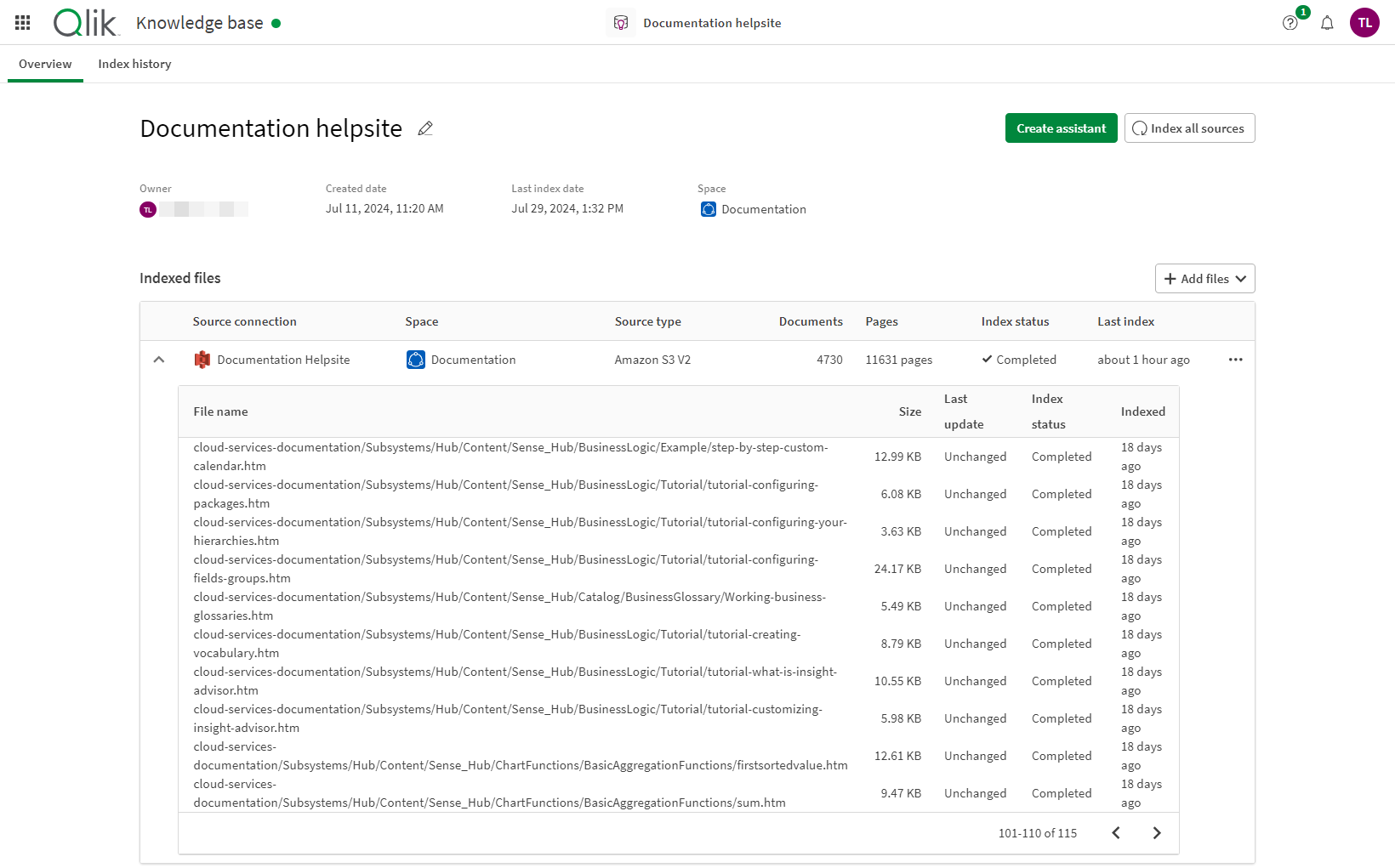Working with knowledge bases
Knowledge bases are collections of individual data sources, connected through a data connection, that are indexed for use in generating responses to user questions.
Knowledge bases provide a single place for searching and maintaining sources of unstructured data. Knowledge bases should align with a specific topical domain. For example, marketing knowledge bases might contain:
-
Sales enablement
-
Competitive analyses
-
Customer references
-
Use cases
You add unstructured data sources to your knowledge bases, either by uploading them to Qlik Cloud or by using a data connection. Once added, Qlik Answers indexes the data sources. Indexed data sources can then be used by Qlik Answers assistants to generate answers.
Navigating knowledge bases
Knowledge bases have two sections:
-
Overview
-
Index history
Overview
Overview provides details for the knowledge base and indexed files.
Overview

Overview provides the following metadata:
-
Owner
-
Created date
-
Last index date
-
Space
In Indexed files, you can view the connections to data sources added. You can expand the connection to view individual files. Individual files display the following metadata:
-
File name
-
Size
-
Last update
-
Indexed
You can add more data sources by clicking Add files.
You can index or reindex files in a source connection by clicking and selecting Index or Reindex. You can index all sources by clicking Index all sources. For more information on indexing, see Indexing knowledge base data sources.
You can create an assistant for the knowledge base by clicking Create assistant.
Index history
Index history shows the history of indexes in the knowledge base. It displays the following metadata:
-
Date
-
Source connection
-
Page change
-
Index status
-
Duration
You can index all sources by clicking Index all sources.
Index history

